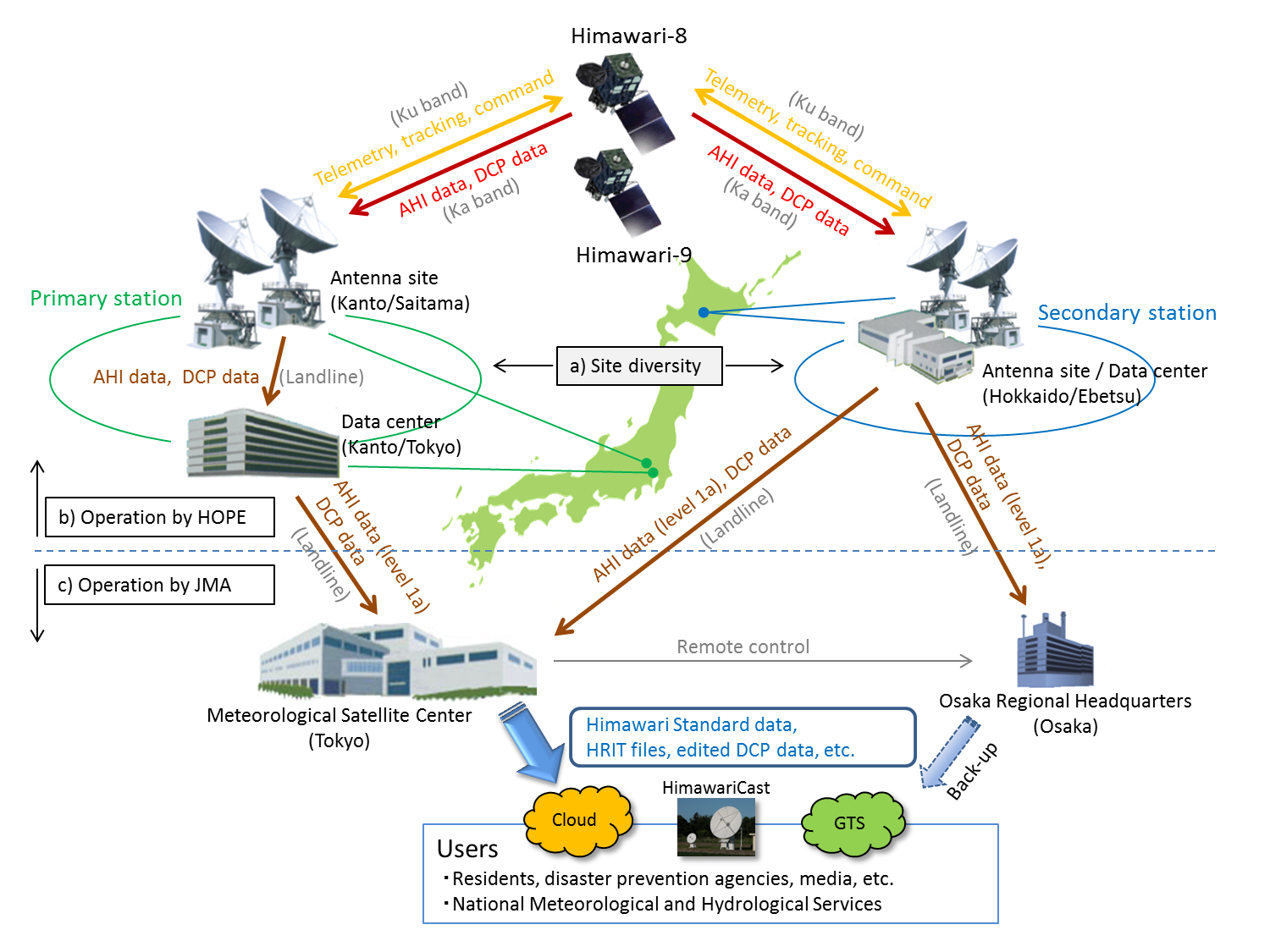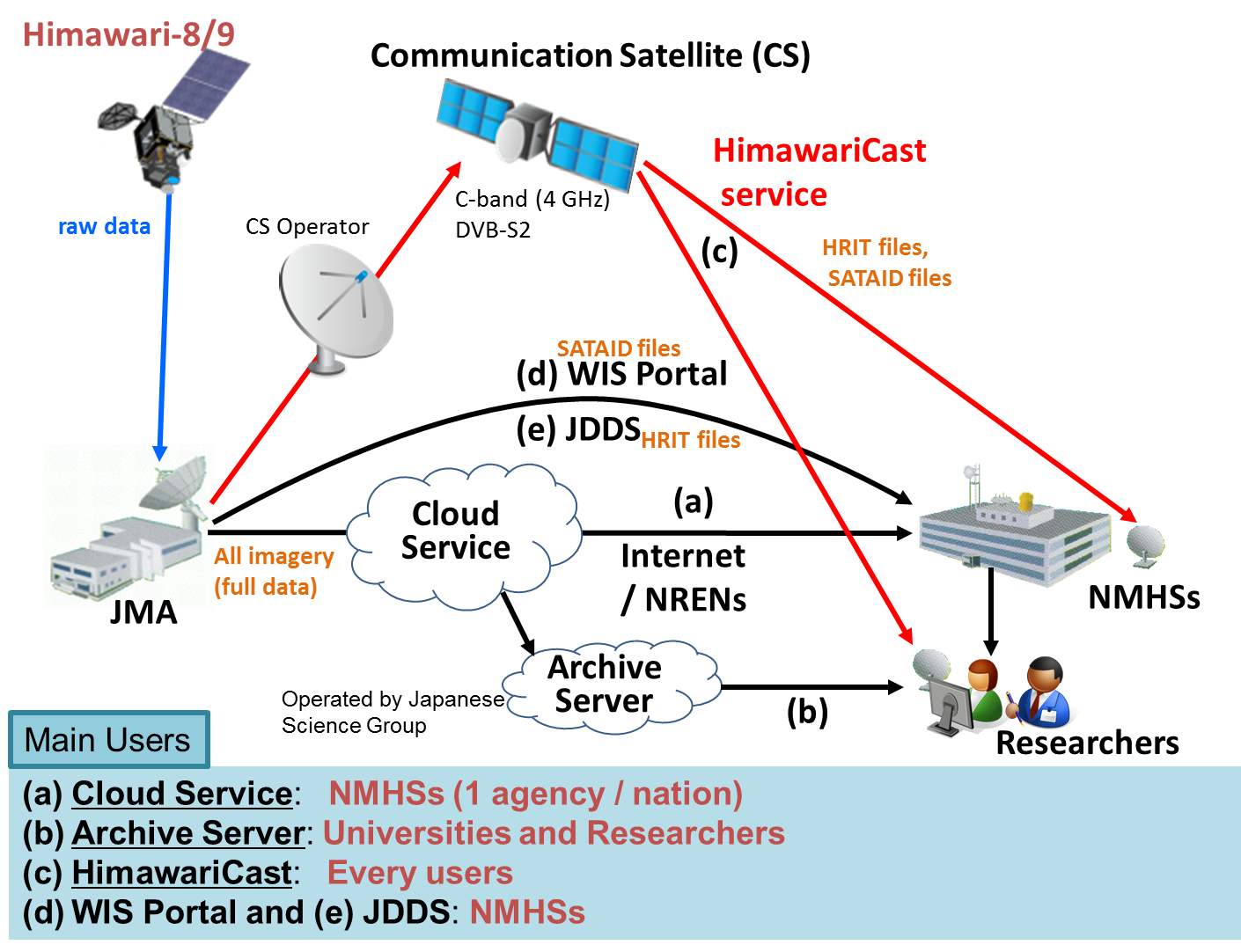Overview of the Himawari-8/9 ground segment and operations
The Himawari-8/9 satellites and their ground stations are operated by Himawari Operation Enterprise Corporation (HOPE) – a special-purpose company (SPC) established under JMA's Private Finance Initiative (PFI) project. Observation data from the Advanced Himawari Imager (AHI) and Data Collection Platform (DCP) data are transmitted through HOPE to JMA, which processes the information and disseminates products to users. The figure below gives an overview of the Himawari-8/9 ground segment.

Site diversity
Himawari-8/9 use the Ka frequency band for AHI and DCP data downlink, and the Ku band for telemetry, tracking and command (TT&C). Because both bands tend to be affected by rain attenuation, two antenna sites (ASs) are established in Kanto region (the primary station) and in Hokkaido region (the secondary station), which locate about 800 km apart from each other. It is likely that these stations are in different weather conditions at the same time and at least one AS can keep connections with Himawari 8/9. The two data centers (DCs) for processing received data are also located at the same locations. In the event that the primary station becomes dysfunctional, the secondary station takes over its operations.
Operation by HOPE
HOPE operates the ASs and DCs. The ASs consist of transmitting/receiving equipment including antennas with a diameter of 9 meters, and the DCs have equipment for satellite control and AHI/DCP data processing. AHI and DCP data received at ASs are transmitted to DCs, where the former is processed to create level 1a data (raw data with calibration/navigation parameters attached) and the latter is converted for use with JMA's telecommunications system. The processed data are transmitted to JMA's Meteorological Satellite Center (Tokyo) and its Osaka Regional Headquarters (Osaka).
Operation by JMA
The Meteorological Satellite Center (MSC) receives data from both the primary and secondary stations for preprocessing. Then MSC produces the Himawari Standard Data, HRIT files and edited DCP data provides them to users. The Osaka Regional Headquarters receives data from the secondary station only. In the event that the MSC system becomes dysfunctional (e.g., due to a malfunction caused by a natural disaster), data/products are provided from Osaka.
Overview of Himawari-8/9 data distribution/dissemination

Himawari-8/9 don't carry equipment for direct dissemination of imagery and products. Instead, all imagery derived from the satellites is distributed to NMHSs via an Internet cloud service (see (a) in the figure). Full sets of data also are provided to researchers via archive servers operated by the Japanese Science Group on a best-effort basis (b). In addition, HimawariCast service disseminates primary sets of imagery via a communication satellite using Digital Video Broadcasting – Satellite – Second Generation (DVB-S2) technology (c). Further details of the HimawariCast service are available here. More information on the cloud service is available here.
Furthermore, JMA continues the online imagery distribution service; WIS Portal (d) and the JMA Data Dissemination System (JDDS) (e).